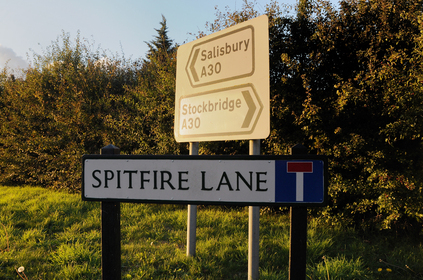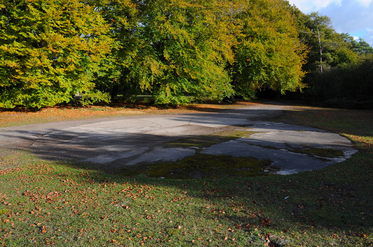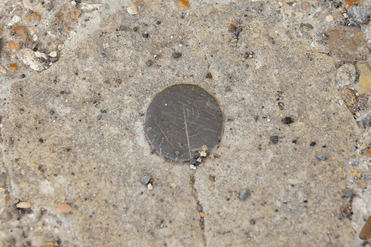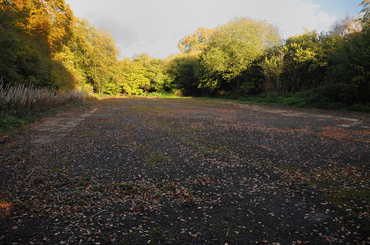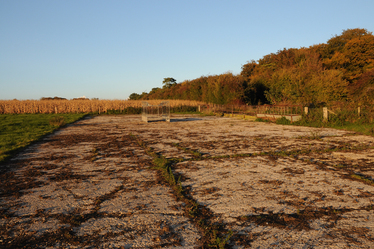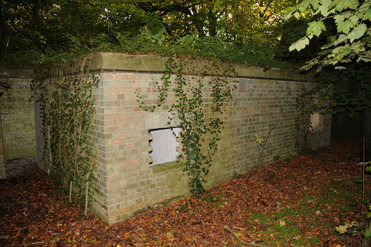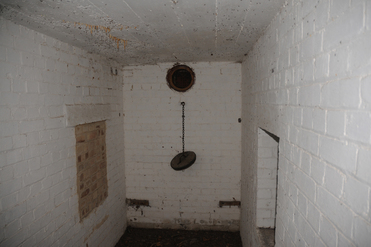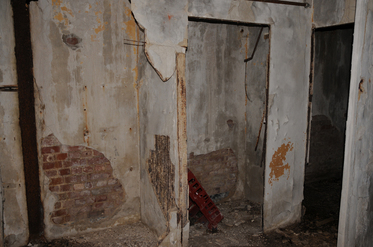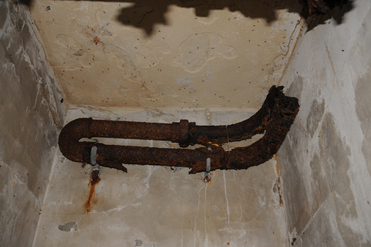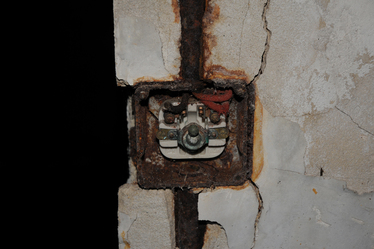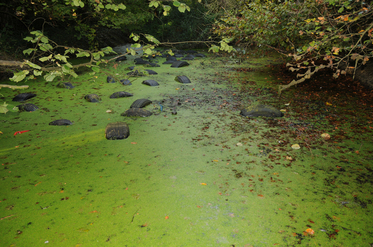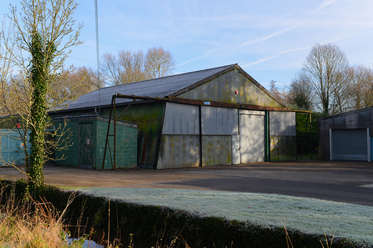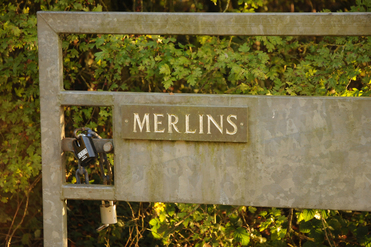Chattis Hill
Please be aware this is a private site and permission will need to be sought before entering.
Words and photos - Richard Hall
On Thursday, 26 September 1940, the day dawned fair with a little high cloud in the South of England. The staff at the Supermarine works at Woolston would have been going about their daily business of building Spitfires, so vital to the life and death struggle that was the Battle of Britain. Two days earlier, Bf 110s of Erprobungsgruppe 210 covered by similar aircraft of ZG76 had attacked the factory scoring five direct hits, although causing little in the way of damage. A sixth bomb, however, hit a works shelter, killing 98 employees and injuring another 40.
Through photo-reconnaissance, the Luftwaffe were aware that earlier attacks on the Woolston Works had not been very effective. Therefore, it was decided that an all-out attack should take place on 26 September. The unit assigned to carry out the operation was again Erprobungsgruppe 210 and also the He 111s of KG55 covered by Bf 110s of ZG26.
In the late afternoon, the force crossed the southern coast and headed straight for the Supermarine Works. Despite intervention from 229, 238 and 303 (Polish) squadrons, over 70 tons of bombs were dropped on the two plants located at Woolston and Itchen. Both sites were wrecked, and production was brought to a standstill with a number of Spitfires destroyed and others damaged. The bombing also claimed the lives of 37 Supermarine workers at the two plants and a higher number of individuals in the surrounding area. The delivery of Spitfires slowed down for around three weeks, but due to the number held at Maintenance Units, there was no real adverse effect.
Following the attack Lord Beaverbrook, the Minister for Aircraft Production visited the site and decreed that the two factories be abandoned. Aircraft production was to be dispersed to other locations where they would be less vulnerable to the attentions of the Luftwaffe. Chattis Hill was one such location where Spitfire production was moved following the abandonment of Woolston and Itchen.
Words and photos - Richard Hall
On Thursday, 26 September 1940, the day dawned fair with a little high cloud in the South of England. The staff at the Supermarine works at Woolston would have been going about their daily business of building Spitfires, so vital to the life and death struggle that was the Battle of Britain. Two days earlier, Bf 110s of Erprobungsgruppe 210 covered by similar aircraft of ZG76 had attacked the factory scoring five direct hits, although causing little in the way of damage. A sixth bomb, however, hit a works shelter, killing 98 employees and injuring another 40.
Through photo-reconnaissance, the Luftwaffe were aware that earlier attacks on the Woolston Works had not been very effective. Therefore, it was decided that an all-out attack should take place on 26 September. The unit assigned to carry out the operation was again Erprobungsgruppe 210 and also the He 111s of KG55 covered by Bf 110s of ZG26.
In the late afternoon, the force crossed the southern coast and headed straight for the Supermarine Works. Despite intervention from 229, 238 and 303 (Polish) squadrons, over 70 tons of bombs were dropped on the two plants located at Woolston and Itchen. Both sites were wrecked, and production was brought to a standstill with a number of Spitfires destroyed and others damaged. The bombing also claimed the lives of 37 Supermarine workers at the two plants and a higher number of individuals in the surrounding area. The delivery of Spitfires slowed down for around three weeks, but due to the number held at Maintenance Units, there was no real adverse effect.
Following the attack Lord Beaverbrook, the Minister for Aircraft Production visited the site and decreed that the two factories be abandoned. Aircraft production was to be dispersed to other locations where they would be less vulnerable to the attentions of the Luftwaffe. Chattis Hill was one such location where Spitfire production was moved following the abandonment of Woolston and Itchen.
|
Chattis Hill is located two miles west of Stockbridge in the Test Valley in the County of Hampshire. Today anyone driving along the A30 between Stockbridge and Lopcombe Corner will see a country road named Spitfire Lane. This leads to the former dispersed site where Spitfire production continued following the attacks of 26 September. |
A 120-acre rectangular field at Chattis Hill had seen use as an airfield previously in 1917. The site had been used as a landing ground for the Royal Flying Corp. However, it was not an ideal site for flying operations as it was prone to waterlogging and also, at times, could be very windy. The first squadrons to occupy the site were 91 and 93, both of which formed in September 1917. A fortnight later, the two units were joined by 92, which came to Chattis Hill from London Colney. Many of the personnel at the airfield were billeted in nearby Stockbridge.
As the First World War continued, it was intended to build more permanent facilities at Chattis Hill. However, as the war ended, construction was halted. The airfield was used for aircraft storage following the cessation of hostilities, but by late 1919 the field had closed.
Following the raids at Woolston, Chattis Hill was brought back into operation with jigs and tools being brought over from the wrecked plants. Hangars were built within the shelter of trees which gave natural camouflage, and production of Spitfires commenced in December 1940. The first deliveries of Spitfires began three months later. The airfield was primarily used for the final erection and test flying of Mitchell's iconic fighter. From research, it appears that Chattis Hill delivered its first Spitfire I, serialled R7250, on 18 March 1941. This aircraft went to 132 Squadron at Peterhead and then to 52 Operational Training Unit at Aston Down. While flying from here on 22 March 1942, it lost an engine cowling and crashed in a forced landing near Rodmarten.
Responsibility for flying out the completed Spitfires was given to the pilots of the Air Transport Auxiliary based at Hamble. Often the ATA's taxi aircraft, Avro Ansons and Fairchild Argus could be seen with their female pilots at Chattis Hill. Spitfire production continued throughout the war, but at its end, flying ceased from the airfield. Parts for Spitfires continued to be manufactured at the site until May 1948. Following this, the site returned to nature with the removal of the assembly sheds and infrastructure. However, it is still possible today to see remains of the airfields wartime role, and the following photographs show some of what is left for those with an interest in the sites history.
As the First World War continued, it was intended to build more permanent facilities at Chattis Hill. However, as the war ended, construction was halted. The airfield was used for aircraft storage following the cessation of hostilities, but by late 1919 the field had closed.
Following the raids at Woolston, Chattis Hill was brought back into operation with jigs and tools being brought over from the wrecked plants. Hangars were built within the shelter of trees which gave natural camouflage, and production of Spitfires commenced in December 1940. The first deliveries of Spitfires began three months later. The airfield was primarily used for the final erection and test flying of Mitchell's iconic fighter. From research, it appears that Chattis Hill delivered its first Spitfire I, serialled R7250, on 18 March 1941. This aircraft went to 132 Squadron at Peterhead and then to 52 Operational Training Unit at Aston Down. While flying from here on 22 March 1942, it lost an engine cowling and crashed in a forced landing near Rodmarten.
Responsibility for flying out the completed Spitfires was given to the pilots of the Air Transport Auxiliary based at Hamble. Often the ATA's taxi aircraft, Avro Ansons and Fairchild Argus could be seen with their female pilots at Chattis Hill. Spitfire production continued throughout the war, but at its end, flying ceased from the airfield. Parts for Spitfires continued to be manufactured at the site until May 1948. Following this, the site returned to nature with the removal of the assembly sheds and infrastructure. However, it is still possible today to see remains of the airfields wartime role, and the following photographs show some of what is left for those with an interest in the sites history.
|
Recently it has come to light that one of the former Robin Hangars from Chattis Hill was to be found in the centre of Stockbridge. The photograph on the left shows the hangar in November 2012.
My thanks go to Richard Drew for bringing this to my attention. www.atlantikwall.co.uk |
If you ever find yourself on the A30 to Salisbury and you pass Spitfire Lane, spare a moment and have a look at this long forgotten site hidden away in isolation within the trees. While you are there try to cast your mind back to the time when Britain was experiencing its darkest hours and the role Chattis Hill played in helping to turn the tide of war.
Sources
- Spitfire Postscript - C.R. Russell
- Spitfire The History - Eric B Morgan & Edward Shacklady
- Hampshire Airfields In The Second World War - Robin J Brooks
- Action Station 9 Military Airfields of the Central South and South East - Chris Ashworth
- Richard Drew
